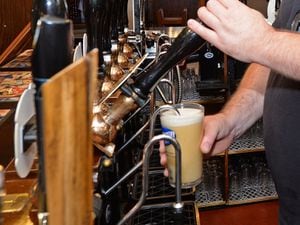West Midlands unemployment still on the rise as jobless rate soars to highest level for more than four years
Britain’s jobless rate has soared to its highest level for more than four years as official figures show nearly 830,000 workers have been dropped from UK payrolls since the start of the pandemic.

The Office for National Statistics revealed the unemployment rate reached five per cent in the three months to November for the first time since early 2016 after another 202,000 people lost their jobs. The total unemployed was 1.72 million – up 418,000 on a year ago.
Unemployment in the West Midlands rose by 17,000 between September and November.
The regional figure of 178,000 compared to 161,000 of the three months to October with the unemployment rate at six per cent.
Numbers in work in the region dropped by 35,000 to 2.78 million – 59.2 per cent of the working population.
There was better news on the claimant count figures with the West Midlands seeing a fall of 2,290 last month to 263, 635 – a rate of 7.2 per cent.
Wolverhampton experienced a fall of 195 to 16,795 (10.3 per cent) with Walsall reducing by 180 to 14,785 (8.5 per cent) and Sandwell down 40 to 19,525 (9.5 per cent).
Only Dudley saw a rise in the Black Country. It was up 180 on November at 14, 280 (7.4 per cent).
Staffordshire also had an overall fall of 235 to 25,035 (4.7 per cent). Cannock Chase dropped by 110 to 3,385 (5.3 per cent), South Staffordshire was down 35 to 2,980 (4.4 per cent), Lichfield had 30 fewer claimants at 2,765 (4.5 per cent) and Stafford dropped by 25 to 3,390 (4.1 per cent).
Wyre Forest, which includes Kidderminster, was up 20 to 3,515 (six per cent).
Nationally, the number of payroll employees nudged up by 0.2 per cent between November and December, with employment also falling at its slowest pace since March, down 88,000 at 32.5 million.
But there was little cheer in the data as the claimant count, which includes people working with low income and hours as well as people who are not working, edged up by 0.3 per cent in December to 2.6 million.
The redundancy rate hit another record high, up 168,000 between September and November to 395,000, though it dropped slightly from a peak in September.
The early recovery in vacancies seen in the summer also slowed, with around 81,000 between October and December at 578,000 – half the level of growth in the previous three months.
Minister for employment Mims Davies said: “These figures show many people are still facing difficult times, but our support is helping keep millions of workers on payrolls across the country.
“Whilst there is light at the end of the tunnel with jabs already in the arms of millions and the vaccine rollout gathering pace, our Plan for Jobs is helping to protect and support livelihoods, as well as create new opportunities for those who need them.
“The number of vacancies has risen for six consecutive months, our Kickstart scheme for young people has already created more than 120,000 job placements and we have provided over £280 billion to protect incomes and livelihoods as we battle the pandemic.”
Steepest
ONS head of economic statistics Sam Beckett said: “The latest monthly tax figures show that there were over 800,000 fewer employees on payroll in December than last February.
“More detailed data, published for the first time, show that parts of London have seen the steepest percentage falls, followed by north-eastern Scotland.
“In the three months to November, on our survey data, the employment rate fell sharply again, while the unemployment rate rose to hit five per cent for the first time in over four years.
“The number of people saying they had been made redundant in the previous three months remains at a record high.
“Meanwhile vacancies, which were rising in summer and early autumn, have been falling in the last couple of months.”
Matthew Percival, CBI director of people and skills, said: “Unemployment rising to five per cent and continued high redundancies show the difficult decisions businesses face.
“The prospect of extending lockdown makes it urgent that the Chancellor acts now to extent job and business support. The Job Retention Scheme needs to run to at least the end of June to avoid a cliff-edge.”
Neil Carberry, chief executive of the Recruitment and Employment Confederation (REC), described figures showing the number of UK workers on payrolls dropped by 793,000 year-on-year last month as “disappointing if not surprising” – but added that firms began posting more job adverts in December.
Mr Carberry said: “The key now is turning this trend around. Rising vacancies and hours worked are a sign that this is possible.
“Firms have learned how to work through Covid and, as REC data shows, some sectors are hiring strongly.”
The REC’s job recovery tracker found 1.77 million job adverts were posted in December, which was a record for 2020.
Mr Carberry said: “We need to take action to boost the recovery – supporting businesses to retain workers and create new jobs, and underpinning the transitions people will need to make.
“Reforming the apprenticeship levy to boost skills, reducing the cost of furlough, deferring 2020 VAT repayments and reducing the jobs tax – employers’ National Insurance – would all be sensible steps. The recruitment industry is ready to help.”





